VBaffle
Retrofit Attic Ventilation Baffle
Cooler In The Summer With Attic Insulation Baffles
This picture is of the left side of the master bedroom retrofitted with V-Baffles. Notice the "Spot" temperature is 75.9 degrees.
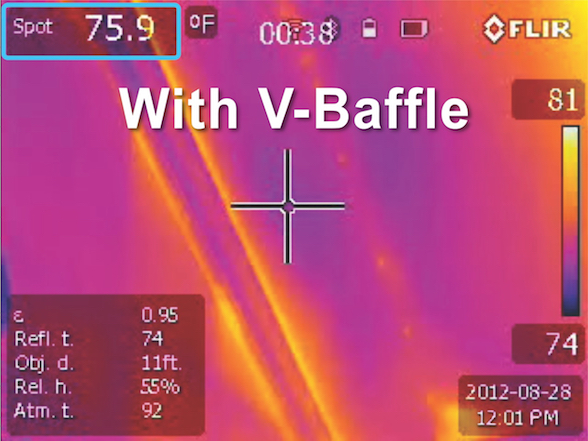
This picture is of the right side of the master bedroom that was left unbaffled. Notice the 'Spot' temperature is 80.2 degrees.
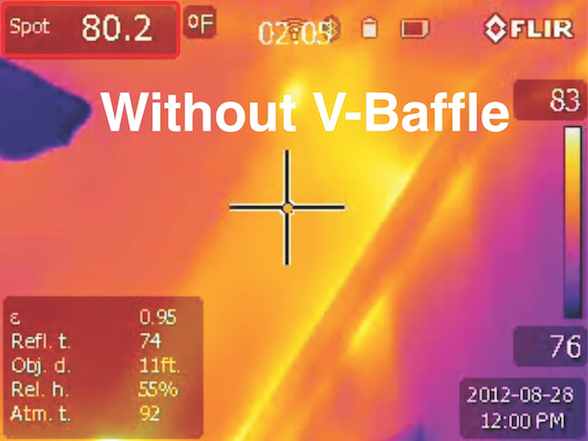
The house where these images were taken is located in, Kingwood TX. The master bedroom is located on the East side of the house with no shade trees. All of the thermal images were taken with a, Flir E50 bx. You can look at the bottom right hand corner of the pictures to see the date and time that the pictures were taken.
No More Hot Rooms
In the Summertime, rooms with cathedral and vaulted ceilings; especially bedrooms, bonus rooms, game rooms, and upstairs rooms, that did not have insulation baffles installed during new construction, are typically warmer than the rest of the house.
No matter how low you try turning the airconditioner down, the rooms will still be warmer in comparison to the rest of the house. This is because the sheetrock temperature of an unbaffled ceiling section can be as much as five (5) degrees warmer than the ceiling surface temperature of a cathedral ceiling with a ventilation baffle.
Angled ceiling without rafter baffles.

As the picture above shows, when a cathedral or vaulted ceiling isn't baffled out, then there is no air space between the roof deck and the insulation. Without this airspace the blistering heat from the roof is absorbed into the insulation, transfered to the ceiling, and then radiated into the living space below. Because your HVA/C thermostat is centrally located, it shuts the HVA/C system off when the room that the thermostat is in reaches the set temperature, but the other rooms remain uncomfortable because of the extra heat built up in the cathedral or vaulted ceiling sections.
Warmer In The Winter With Insulation Baffles
This picture is of the left side of the master bedrood retrofitted with V-Baffles. Notice the 'Spot' temperature is 73.4 degrees.
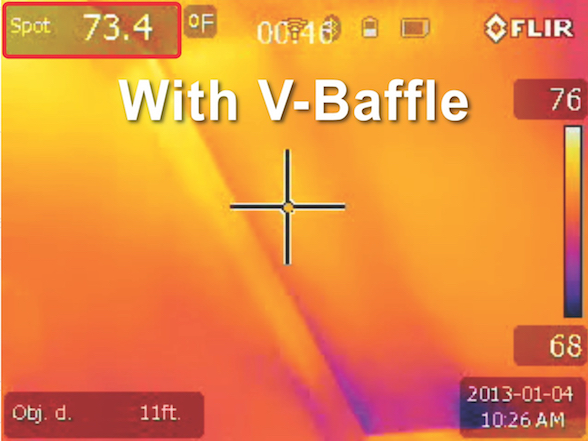
This picture is of the right side of the master bedroom that was left unbaffled. Notice the 'Spot' temperature is 71.6 degrees.
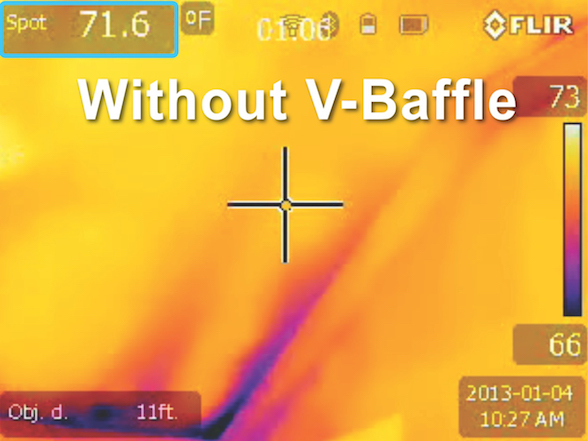
When your cathedral and vaulted ceilings are retrofitted with V-Baffles, it helps to equalize the ceiling's surface temperature with the rest of the house. This turns those once uncomfortable areas into comfortable useable spaces. Make your house a home with V-Baffle today.
No More Cold Rooms
Ventilation in the Winter is probably one of the most overlooked and or misunderstood parts of a properly vented attic. When people think of ventilation they are typically thinking of venting heat out of something, but in the Winter it's not the heat that you have to worry about; it's the moisture.
Conventional insulation works with an R-Value, which is the ability of the product to resist the heat once the heat has already been absorbed. The R-Value of conventional insulation, whether fiberglass, rockwool, or cellulose is reduced by as much as 35% with just 1.5% moisture content inside the insulation.
This moisture will not only immediately affect your insulations R-Value, but prolonged exposure to this moisture will cause your insulation to settle and compress, and eventually become ineffective.
Angled ceiling with V-Baffles
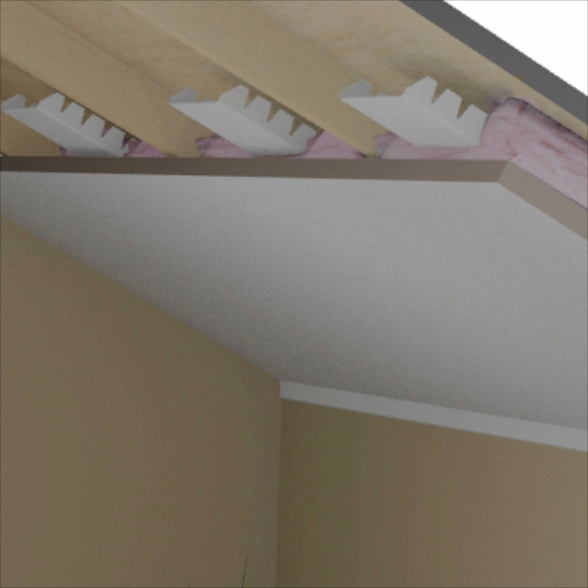
As you can see in the picture above, the insulation baffles create an airspace between the insulation and the roof deck. This will allow fresh air to flow through the attic, pulling out not only the hot air in the Summertime, but also the damaging moisture in the Wintertime.